In 2006, I wrote a report for Fauna and Flora International (FFI) on the Bunong, one of Cambodia´s indigenous minorities. The Bunong live mostly in the north eastern province of Mondulkiri, an area of high barren plateaus, dense rainforests and virtually no roads, bordering on Vietnam.
Traditionally, the Bunong practice swidden agriculture and domesticate elephants. As there are hardly any elephants left in the wild in Cambodia, that tradition has already died. Today, their traditional farming lifestyle is also under threat – by missionaries, the loss of rain forest to mono-cultures and a huge influx of Khmer people into Mondulkiri Province.
The report was published in English and Khmer, primarily to create awareness within the Cambodian government and the business community for the plight of the indigenous people of northeastern Cambodia and for their ability to manage natural resources in a sustainable manner. The fate of the remaining elephants in Mondulkiri is dependent on the continuing survival of the Bunong culture, which has since taken a serious beating from all the developments this report warns about.
The Bunong – Caretakers of Cambodia´s Sacred Forests was commissioned by FFI and co-financed by the EU, US AID, The NGO Forum on Cambodia, The Australian Government and the East West Management Institute.
This is Part 3. Read Part 1, Part 2 and Part 4 here.
All photographs by Aroon Thaewchatturat.
Part 3 – The Great Unknown – Bunong Culture in the Cambodian Context
The Bunong’s intergration into Cambodian society
Mane Yun is about to become the first Bunong lawyer – ever. Only a small number of Bunong have been able to access higher education – during a brief period of education during the French and Sihanoukist eras and just recently. As the education system in Cambodia is recovering in larger cities and still has some way to go in the country side, making the leap out of Mondulkiri is an option only a few Bunong undertake.
The 25-year old Mane recalls, “Above all I have to thank my mother and my Khmer school director in Sen Monorom, to prove to me and my classmates and teachers that Bunong can make good academic students. It gave me the self-confidence to train and work as a teacher for both Khmers and Bunong. I managed to complete my education in law. But I am no longer the only one; there are hundreds of Bunong studying in the provinces and about fifteen Bunong now go to university in Phnom Penh.”
Mane Yun feels it is high time that some Bunong partook in mainstream Cambodian society, in order to change the perception amongst many ordinary Khmers that the Bunong are inept.
“It can be frustrating, “Mane Yun explains, “Some Khmers believe that Bunong have tails or kill themselves falling out of trees when they are old. On television we are often represented as villains.” The young lawyer also recounts a shocking misperception, “I have heard stories about how the Bunong invite a new friend to their home and kill and then cook their daughter in honour of their guest.”
Mane Yun dispels such myths, by the mere fact that she is already highly educated and engaging in such discussions. What’s more, her voice is getting stronger, as she advocates the rights of indigenous peoples throughout Asia and assists the United Nations in sensitive local empowerment discussions.
The rediscovery of Bunong culture in its Cambodian context
The sustainable management of the country’s unique resources and the contributions of its indigenous people are not at the forefront of affairs in the kingdom at the moment. No wonder then, that their cultural role is often overlooked or misunderstood. Indeed, knowledge about the Bunong in Cambodia is sparse on all fronts. Ask the average Cambodian, have a look in school curriculums or scour historical documents and no coherent body of knowledge of the Bunong is likely to emerge.
Huud An is 75 years old. She is typical of the women of her generation – her life perfectly mirrors the Bunong’s experiences during the second half of the 20th century. Huud An speaks virtually no Khmer but two different Bunong languages – old Bunong and the Bunong used by everyone today. The younger Bunong don’t understand when Huud An speaks in the language she remembers from her childhood.
Huud An recalls her isolated youth, “I lived near a river when I was a little girl, deep in the forest. I saw the French a few times but they never spoke to the Bunong. I had no contact at all with Khmer people until King Sihanouk’s soldiers came one day and told us to stop wearing our clothes and speak Khmer. Later, we had to keep moving because the Americans were bombing Mondulkiri. After that, Pol Pot’s army took us to Kho Nhek. That was terrible, because I could not make sacrifices to the spirits. We were not allowed to pray. But since then, contacts with Khmers have been friendly.”
The current dearth of information on the Bunong is not surprising. The voices of people like Huud An and Moe Chan are not heard in the new Cambodia. The Mondulkiri of the past, even the very recent past, was a land where different villagers seldom met, because distances were too great and infrastructure hardly existed. Even today, just two people per square kilometer live in the province. Trade between Khmers and Bunong is documented back to the 4th Century, but in the days before motorized transport, the Khmer rarely met the Bunong. The indigenous people remained in the shadows of the trees, acknowledged but barely considered, throughout Khmer history. By the middle of the 20th century, the Bunong still lived deep in the jungle and while Cambodia was transitioning to independence, life in the forest remained virtually unchanged. King Sihanouk’s assimilation campaign and the Khmer Rouge changed all that but did little to foster understanding amongst Cambodians. Only in the last decade or so have some Bunong become part of Khmer daily life and their cash economy.
Huud An noticed the changes in recent years, “After we returned from Koh Nhek, we had more contact with people in Sen Monorom. I grew banana, pineapple and pumpkin on my chamkar and we would walk 20 kilometers to the market, sell our produce, sleep outdoors and walk back the next day,”
The common Cambodian heritage of Khmers and Bunong
In general, there is much that the Khmers and the minorities share – part of a common history and culture. Even some marriage conventions are similar. Like many Cambodians, Huud An had an arranged marriage. Her future husband’s family had to go and ask her parents for permission several times before a ceremony could be arranged.
“My parents introduced me to my husband while I was working on our field. After an offer from my husband’s family, they decided on the match and there was a big festival when 50 couples from many villages all got married at the same time and then started their fields the next morning.”
As village elder Yat mentioned, the songs likely to be played at a Bunong marriage would be both of Bunong and Khmer origin. The Bunong appear mysterious, even foreign, while in fact they have been contributing to the Khmer nation for centuries – quietly, modestly, on the country’s geographical and cultural margins. Clearly, the Bunong are affected by Khmer culture and the future of the Bunong lies within the cultural perimeters of Cambodia’s heritage. But the forest remains the Bunong’s primary source of income as well as cultural and spiritual orientation and lies at the very heart of Bunong identity. This, in physical terms, is the greatest difference between the Bunong and their neighbors – the Bunong cannot continue their lifestyle without forest.
The village elder Moe Chan knows that the Bunong must become part of Cambodia’s economic and cultural heartbeat as never before, “Life has become easier – with motorbikes we can get our produce to the market quicker. But we are worried about the forests being cut down, as they provide us with everything we need. What point is an easy road to the market when you have nothing to sell?”
The young lawyer Mane Yun now dedicates her energies to inform the Cambodian people about the true nature of the Bunong– their neighbours. “We must tell Cambodians about who we are. We should produce books, TV programs and movies, carried by our own voices. Then the Khmers will see how we really live.”

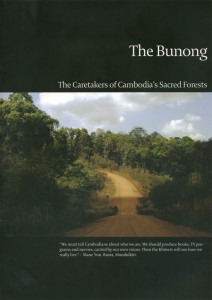

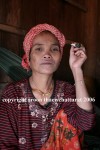
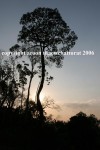

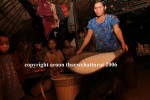
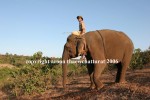
Thank you for sharing the wonderful photos.I hope to soon visit the Bunong Hill Tribe. You have done a great service to Cambodia. I hope your photos and work is appreciated .I pray that the culture is preserved peace and stability.Elephants to multiply. http://www.acic.info
Dear Vanny,
thank you for your mail.
All the images on this page were taken by Aroon Thaewchatturat working for FFI (Flora and Fauna International) in order to promote Bunong culture and alert the Cambodian government to their plight. Aroon asked for permission to shoot these pictures from every individual in the images and made it clear that the images would be used in the book – The Bunong – The Caretakers of Cambodia´s Sacred Forest. Hence your mother was asked, as were any relatives who might have been present. The images are not used for commercial purposes but to highlight the challenges faced by the Bunong community. Of course, if you feel that this is unfair, do let me know which image your mother is pictured in and I will take it off the website. I understand the your concern, though the pictures are used to promote Bunong culture and rights.
Best,
Tom
i was born in vietnam and live go to school in vietnam .now i know hold story as once day i ask my selt where viet cam from they cam from idochina .take bunong funan country events boths four country .now everyone please stand for our coutry or you gues to be slave forever.
the bunong is not only in cambodia some of us a lots in vienam and laos .thailand now we lets this world know about bunong funan is our country names since 2000 years agos. all these four country ours voice ups we really need help,
rights we must take our country back once days